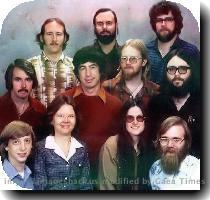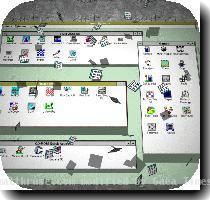Intel’s bright expectations for 2010 point to real PC recovery, not holiday shopping blip
By Jessica Mintz, APFriday, January 15, 2010
Intel outlook points to PC industry recovery
Intel’s fourth-quarter earnings breezed past Wall Street’s expectations, and its rosy profit outlook for 2010 was another sign that a lasting recovery for the recession-battered personal computer market is under way.
As the first major technology company to report its results for the last quarter, Intel is seen as a barometer for the PC market and for technology spending in general. Its revenue beat the Street, as did its gross margin, which can measure how well Intel managed costs.
Investors were restrained in their enthusiasm. Shares of the No. 1 maker of computer microprocessors edged up less than one percent in after-hours trading. Earlier, the stock had gained 2.5 percent to end the regular session at $21.48.
PC shipments grew more sharply than expected in the fourth quarter, a promising sign after a brutal year for the industry during the recession. Intel, which supplies the vast majority of the “brains” inside computers, rode the resurgence of consumer PC shopping to a profit of $2.3 billion, or 40 cents per share.
That was more than nine times as much as it earned in the year-ago quarter, when profit totaled $234 million, or 4 cents per share.
Intel also posted its highest gross profit margin in history, at 64.7 percent. A higher gross margin number means the chipmaker was able to turn more revenue into profit. It’s a key measure for a manufacturing-intensive company such as Intel because it reflects how well costs are held in check.
Revenue climbed 29 percent to $10.6 billion, as Intel sold more chips, many at higher prices than in the past.
Analysts expected a profit of 30 cents per share and $10.2 billion in revenue, according to a Thomson Reuters survey.
It’s never clear whether chip sales line up with demand for new computers. PC makers might be buying more than they need to replenish low supplies or fewer than they need to preserve cash. But Intel clearly sees the fourth quarter as more than a holiday shopping-induced blip.
Stacy Smith, Intel’s chief financial officer, said in an interview that he believes consumer spending will continue to drive growth in Intel’s business in 2010. While Intel hasn’t yet seen signs that big companies are feeling freer to replace old computers, the CFO said he believes it will happen this year, once the companies have finished testing the new Windows 7 system from Microsoft Corp. that will be installed on most new workplace PCs.
Intel executives also said the company would hire more employees as part of an increased focus on research and development.
Doug Freedman, an analyst for Broadpoint AmTech, said he wasn’t surprised investors weren’t more effusive. Shares had gained steadily over the last few weeks as it began to seem Intel would beat expectations. And Intel’s investors have a long-term perspective on Intel, treating it more like a manufacturer than a technology company.
For the current quarter, Intel forecast revenue from $9.3 billion to $10.1 billion, and a gross profit margin of 59 percent to 63 percent. For the full year, it expects a 61 percent gross margin.
Analysts had forecast first-quarter revenue of $9.3 billion, a quarterly gross margin of 59 percent and an annual gross margin of about 55 percent.
Intel delivered strong fourth-quarter results despite having to pay $1.25 billion to settle antitrust charges brought by Silicon Valley rival Advanced Micro Devices Inc., the world’s No. 2 microprocessor maker. That cut 22 cents from Intel’s bottom line. The company also had said, however, that the payment would lower its tax rate because legal settlements are tax deductible.
In the comparable quarter last year, Intel’s earnings were hurt by a $1 billion charge for a reduction of the value of its investment in wireless networking company Clearwire Corp. That sliced 17 cents from the company’s profit.
Intel’s full-year earnings fell 21 percent to $4.4 billion, or 77 cents per share, from $5.3 billion, or 92 cents per share in 2008. Revenue slipped 7 percent to $35.1 billion from $37.6 billion a year ago.
Analysts were looking for earnings of 67 cents on $35.1 billion in revenue.
Tags: Earnings, Recessions And Depressions



